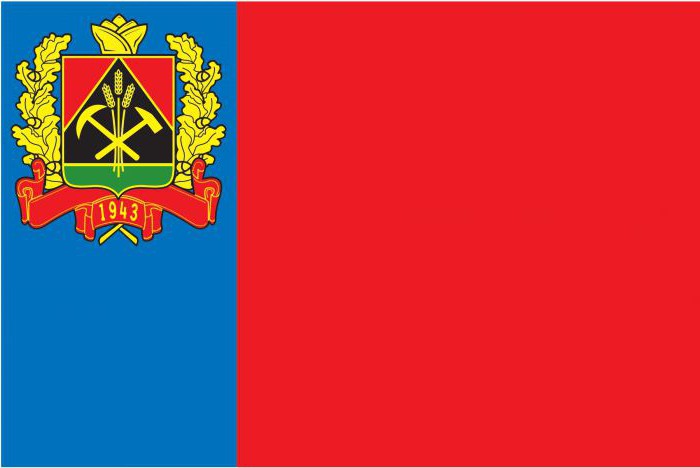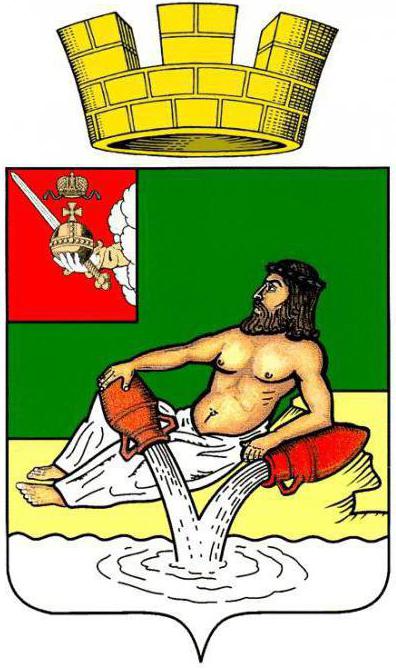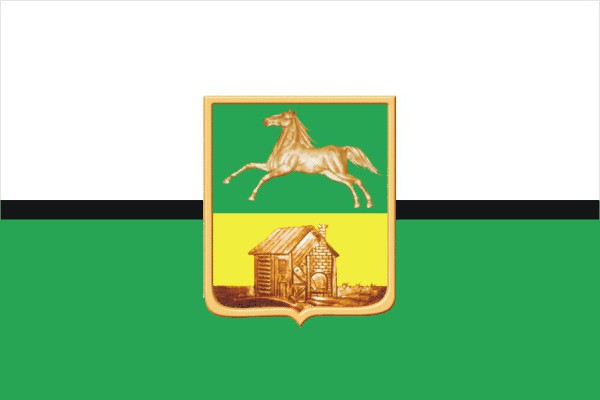Самые древние летописные источники утверждают:when the Varangian prince Rurik came to rule on the lands of the ancient Slavs, there already stood Veliky Novgorod. The emblem of this city is a source of real mysteries and inconsistencies, which many generations of local historians and historians are fighting to solve.

Seals of the Novgorod Republic
In various seals that were used forfastening trade agreements of Novgorod merchants with foreign traders and for the approval of contracts and regulations of the Novgorod Republic, five main images were used: Jesus Christ, the horseman, the foot soldier, the beast and the bird. Among them there are no those symbols that contain the modern emblem of Veliky Novgorod - the throne, two bears, fish.

For the first time similar images appear afterthe final annexation of Novgorod to the Moscow state in the time of Ivan the Terrible in the form of the Novgorod governor's seal, made in 1565 at the behest of the tsar. In this form, she entered the Great State Seal of Ivan IV. It is described as a “place”, on it - a staff, on the one hand - a bear, on the other - a lynx, below - a fish. “Place” in it is called vechea “degree” - a tribune with steps, which was addressed to the people during the citywide meetings of the Novgorod Republic.
Different interpretations
Difficult and unusual symbolism that containsthe emblem of Veliky Novgorod has several different interpretations. Not all researchers are satisfied with the generally accepted explanations that the appearance of bears is associated with the existence of a cult of this beast among the pagans living in the Novgorod lands, and fish symbolize the ancient crafts of people living on the shores of Ilmen-lake and the richness of its waters with different living creatures.
Известно мнение, что символы, изображенные на Seal of Ivan IV, this is the threat of the Moscow Tsar to the freedom-loving Novgorod. The staff, laid on the tribune of the assembly, means the supremacy of the central power of the Moscow autocrat over the republican aspirations of the townspeople. Wild animals on each side personify the power of the Moscow prince and punitive measures awaiting the recalcitrant. Fish symbolize the water, where those who dare to fight for independence will be thrown. According to another version, fish as a symbol of Jesus is evidence of the support of royal power on the part of higher powers.
Shortly after the appearance of the Great Seal of IvanTerrible events occurred, according to some confirming the correctness of those who treats the Novgorod coat of arms. Novgorod the Great was accused of treason by the Moscow tsar and subjected to cruel restraint.
"Titulnik" Alexei Mikhailovich
В знаменитых памятниках русской геральдики XVII century, there is a final modification of the Novgorod symbolism, which led to the appearance of the final classical version. In the painting of the seals of Tsar Alexei Mikhailovich, the coat of arms of Veliky Novgorod is similar to the seal of the times of Ivan IV, but the lynx disappeared in it, replaced by the second bear.
A collection of heraldic symbols that waspresented to the father of Peter I - "Titulnik" in 1672 - for the first time shows the full set of components of the Novgorod coat of arms. The step stand was transformed into a throne, on which a scepter, a cross and a candlestick lie, surrounded by two bears, below - two fish. This option differs from the modern one only by turning the throne (three quarters). The coat of arms of Veliky Novgorod in the “Znamenny Armorial” of Minikh (1730) shows the throne as it is now - in full face.
Historical coat of arms of the time of Catherine
Administrative reform of Empress CatherineII, during which the formation of provinces and provinces occurred, was supported by the reorganization of the heraldic work. State symbols were brought in line with the requirements of the science of gerbeks and became uniform. The coat of arms of Veliky Novgorod, the description of which was approved by the highest on August 16, 1781, took the form that is considered to be a classic.

At the same time, he mysteriously did not avoid errors.According to the heraldic laws, the colors used in the coats of arms are divided into two types, called tinctures: metals and enamel (enamel). The first are gold and silver, the second is scarlet (red), azure, niello, purple, green and some additional colors. The most important rule of tincture does not allow metal to be placed on metal, enamel to enamel, and exceptions must be clearly justified. The description of the coat of arms of 1781 does not contain such explanations, although the golden throne is located in a silver field.
Metamorphosis of the era of change
Soviet heraldry excluded anyhints of monarchical and religious symbols. Not avoided processing and the emblem of Veliky Novgorod. Photos of the urban symbolism of those times show that the royal throne was removed from it with a scepter and a cross placed on it. Two bears were located on both sides of the figure 859, which means the official year of the city's foundation. The rule of tinctures was now observed, but the coat of arms was losing touch with the centuries-old history of the ancient city.

Recreation of historical heraldic symbolsIt began across the country with the beginning of a new Russian history. Veliky Novgorod received them - the coat of arms and flag were developed on the basis of the classical version of the XVIII century. At the same time, it was not without difficulties: in 2006, the variant was approved, for some reason deprived of the image of fish in the lower azure tip of the shield. Only in 2010, the fish were returned to the emblem of the city at the request of the people of Novgorod, and he acquired a canonical, historical look that retains the old riddles and secrets.












